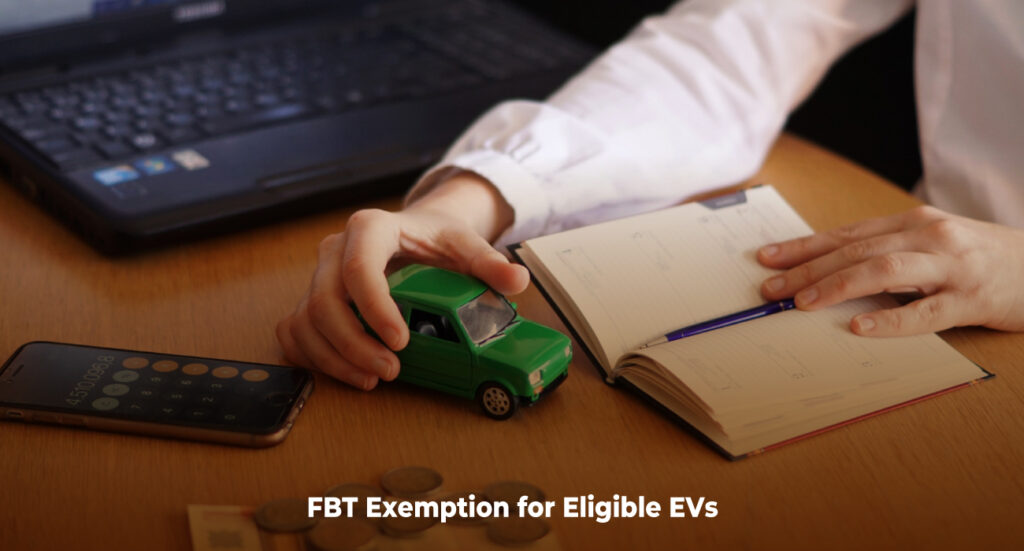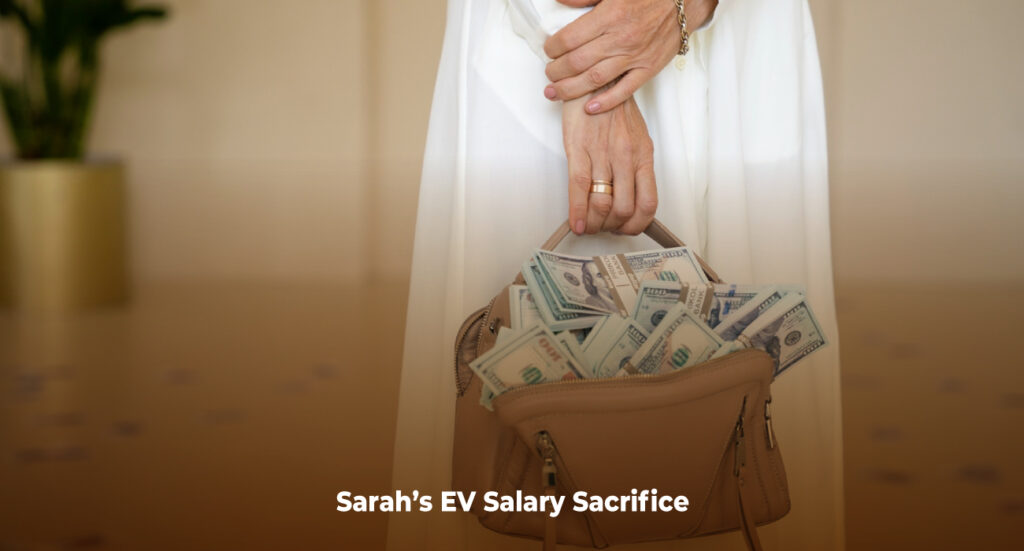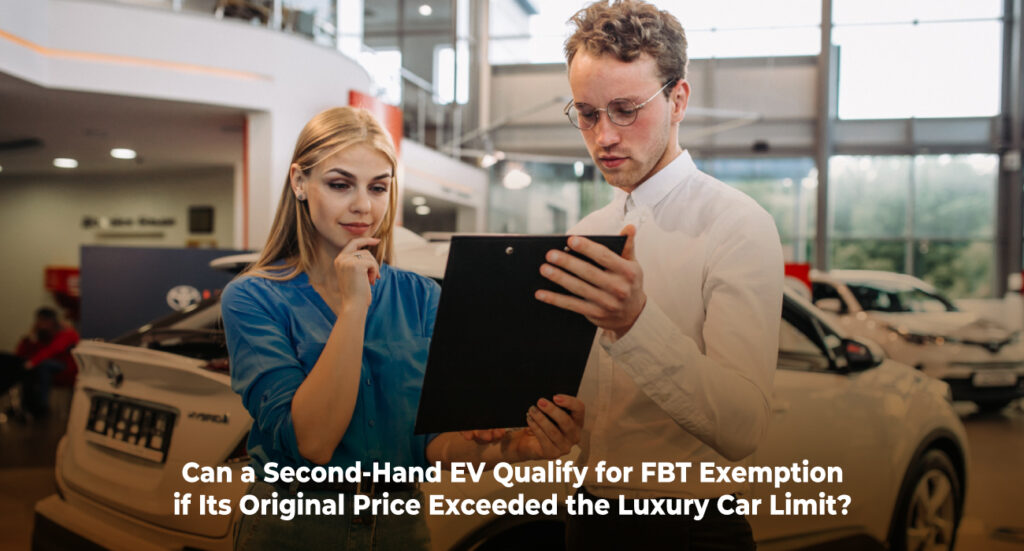Salary Sacrificing an Electric Vehicle in 2025: A Smart Tax Move More Australians Should Know About
This isn’t your typical accountant’s trick. Salary sacrificing a car—especially an electric vehicle (EV)—is one of those rare opportunities where the tax system can work in your favour, significantly lowering your tax bill while giving you access to a brand-new vehicle. It’s a win-win.
Yet despite the generous tax concessions now available under the Federal Government’s Electric Car Discount policy, many employees and employers are either unaware or unclear about how to take advantage of it.
This article will walk you through how salary sacrificing works when it comes to electric vehicles, explain the benefits, and show you—with real numbers—how it could put thousands of dollars back in your pocket. Whether you’re an employee looking to drive a Tesla or a small business owner considering offering EV novated leases as a staff incentive, understanding this scheme could change the way you approach car ownership in 2025.

What is Salary Sacrificing?
Salary sacrificing is when you agree to receive less of your gross salary in exchange for certain benefits. These benefits could include superannuation contributions, laptops, or in this case, a novated lease for a motor vehicle.
A novated lease involves three parties:
- You, the employee
- Your employer
- A finance company (the lease provider)
Under this agreement, your employer leases a car on your behalf, and the lease payments come out of your pre-tax income. It reduces your taxable income, which means you pay less tax. The good news? When the car qualifies for the EV exemption, you pay no Fringe Benefits Tax (FBT) either.

What’s New: FBT Exemption for Eligible EVs
Thanks to the Electric Car Discount (which began on 1 July 2022), eligible electric vehicles and plug-in hybrids provided through salary sacrifice arrangements are now exempt from Fringe Benefits Tax—a game-changer in the world of novated leasing.
The best part? The FBT exemption still applies even if the vehicle is used entirely for private purposes, including by an employee’s spouse or family member. As long as the car meets the eligibility criteria, personal or family use does not disqualify it from the exemption.
To qualify:
- The vehicle must be zero or low emissions (i.e. battery EV, hydrogen fuel cell, or plug-in hybrid EV).
- It must have a value below the luxury car tax (LCT) threshold for fuel-efficient vehicles, which is $91,387 for 2024–25.
- The car must be first held and used on or after 1 July 2022.
- It must be used by a current employee or their associate (like a family member).
This FBT exemption only applies to the car benefit itself, not to other associated benefits (such as chargers or running costs), unless those are also exempt or otherwise deductible.
What Are the Benefits for the Employee?
Let’s break down the key benefits:
✅ Reduced Taxable Income
Your lease payments come from your pre-tax income, reducing the amount of income you pay tax on.
✅ No Fringe Benefits Tax
Normally, providing a car for private use would attract FBT. But eligible EVs escape this entirely.
✅ No GST on the Purchase Price
As the lease company claims the GST credit, you effectively save 10% on the cost of the car.
✅ Simpler Budgeting
Lease payments usually bundle in servicing, rego, insurance, and even tyres—making car ownership feel like a fixed subscription.
But What’s the Catch?
There are a few things to keep in mind:
- The exemption doesn’t apply to all cars. Petrol and diesel cars don’t qualify.
- Plug-in hybrids lose their exemption after 1 April 2025, unless you had a financial commitment in place before that date.
- The running costs are still subject to GST.
- The residual value of the lease (balloon payment) is payable at the end.
That said, even with these factors, many employees still end up better off.

Real-Life Example: Sarah’s EV Salary Sacrifice
Let’s look at how much Sarah, a 35-year-old marketing manager earning $120,000 a year, could save by salary sacrificing an EV.
| Details | Without Salary Sacrifice | With EV Salary Sacrifice |
|---|---|---|
| Gross Salary | $120,000 | $120,000 |
| EV Lease Cost (annual) | $0 | $16,500 |
| Taxable Income | $120,000 | $103,500 |
| Estimated Income Tax | $29,467 | $24,104 |
| Net After Tax | $90,533 | $78,396 |
| Lease Payment (after-tax cost) | $16,500 | Already deducted pre-tax |
| Final Disposable Income | $74,033 | $78,396 |
Total Annual Savings: $4,363
Assumes lease cost includes insurance, registration, and servicing. Excludes running costs like charging.
As you can see, Sarah ends up $4,363 better off per year—and that’s while driving a brand-new electric vehicle.
What Happens at the End of the Lease?
At the end of the lease term (usually 3 to 5 years), Sarah can:
- Pay the residual (balloon) amount and own the car outright
- Trade in the vehicle and lease a new one
- Refinance the residual and continue driving the same car
There’s flexibility in the arrangement depending on your financial and lifestyle goals.
How Employers Benefit Too
Employers can offer EV novated leases as an incentive or employee benefit at no additional cost. Since the FBT exemption reduces compliance and tax burdens, employers may also see this as part of a sustainability initiative that aligns with ESG goals.
They’re not on the hook for the lease if the employee leaves—the lease is “portable” and moves with the employee.

Can a Second-Hand EV Qualify for FBT Exemption if Its Original Price Exceeded the Luxury Car Limit?
Here’s an important point that often gets overlooked when it comes to salary sacrificing electric vehicles: the Luxury Car Tax (LCT) threshold.
To qualify for the FBT exemption, an electric vehicle must have never exceeded the LCT threshold for fuel-efficient cars, which is $91,387 for 2024–25, at the time it was first sold or used.
But what if the car was first sold for more than the threshold and later resold for less?
Let’s take a real-world scenario from the training material:
- Company A purchased an eligible EV for more than the LCT threshold, paid Luxury Car Tax, and used it in their business.
- Later, Company B bought the same vehicle second-hand for less than the LCT threshold and provided it to an employee via salary sacrifice.
Although Company B purchased the car for less than the threshold, it’s not eligible for the FBT exemption. Why? Because eligibility is based on the car’s original retail value when first sold in Australia—not the second-hand purchase price.
So even though Company B didn’t pay Luxury Car Tax, the car had already been classified as a “luxury vehicle” when first sold. This disqualifies it from the FBT exemption, meaning Company B must pay FBT on the benefit provided to the employee.
Are Plug-in Hybrids Still Worth It?
Until 1 April 2025, plug-in hybrid vehicles (PHEVs) are still eligible for the FBT exemption if the financial commitment (i.e. lease agreement) was entered before that date. After this cut-off, PHEVs lose their tax-free status.
So if you’re considering a hybrid, get the agreement in place before the deadline.

Let’s Recap the Key Takeaways
- Salary sacrificing an EV through a novated lease can save thousands in tax.
- The FBT exemption only applies to eligible zero- or low-emission vehicles under the luxury car threshold.
- Both employees and employers benefit—through reduced tax and simplified fleet management.
- Plug-in hybrids lose their FBT exemption after 1 April 2025 (unless locked in beforehand).
- Keep an eye on Luxury cars if you are purchasing second hand EV
- At the end of the lease, you can buy the car, refinance, or swap for a new one.
Still Unsure? Speak with a Tax Specialist
Salary sacrificing an electric vehicle is a powerful tax strategy, but it only works when the details are handled properly—from choosing an eligible vehicle to structuring the lease to ensure FBT compliance.
At Investax, we help clients navigate these decisions so they can confidently make the most of available tax benefits. Whether you’re thinking about switching to an EV or already have one in mind, our team of tax specialists can walk you through the numbers and the process.
Contact us today to see how much you could save with a tax-smart novated lease.
General Advice Warning
The material on this page and on this website has been prepared for general information purposes only and not as specific advice to any particular person. Any advice contained on this page and on this website is General Advice and does not take into account any person’s particular investment objectives, financial situation and particular needs.
Before making an investment decision based on this advice you should consider, with or without the assistance of a securities adviser, whether it is appropriate to your particular investment needs, objectives and financial circumstances. In addition, the examples provided on this page and on this website are for illustrative purposes only.Although every effort has been made to verify the accuracy of the information contained on this page and on our website, Investax Group, its officers, representatives, employees and agents disclaim all liability [except for any liability which by law cannot be excluded), for any error, inaccuracy in, or omission from the information contained in this website or any loss or damage suffered by any person directly or indirectly through relying on this information.





